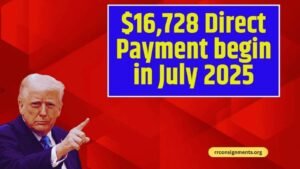Have you ever looked at the pennies in your pocket and wondered if they could be worth more than one cent? The Lincoln Wheat Penny, a small coin with a big history, might just surprise you. Some rare versions of this penny, especially the 1943 copper penny, can be worth up to $49,000! Even more exciting, these valuable coins could still be hiding in everyday change, waiting to be found. Let’s explore what makes this penny so special, how to spot one, and why it’s a treasure for coin collectors.
What Is the Lincoln Wheat Penny?
The Lincoln Wheat Penny, often called the “Wheat Cent,” was first made in 1909 to celebrate the 100th birthday of President Abraham Lincoln. It was designed by Victor David Brenner and was the first U.S. coin to show a real person’s face instead of symbols like Lady Liberty. The front of the coin features Lincoln’s profile, and the back has two wheat stalks around the words “ONE CENT,” giving it the “Wheat Penny” name. These pennies were made until 1958, when the Lincoln Memorial design replaced them.
Why Is the 1943 Copper Penny So Valuable?
During World War II, the U.S. Mint switched to making pennies from zinc-coated steel in 1943 to save copper for the war effort. However, a few copper blanks from 1942 were accidentally used to make 1943 pennies. These rare “mistake” coins, especially those from the San Francisco Mint (marked with an “S”), are now worth a fortune. One such 1943-S copper penny sold for $49,000 at an auction because only a handful are known to exist.
How to Spot a Rare Lincoln Wheat Penny
Finding a $49,000 penny sounds like a dream, but it’s not impossible! Here’s what to look for to identify a valuable Lincoln Wheat Penny:
| Feature | Details to Check |
|---|---|
| Date | Look for “1943” on the front of the penny. |
| Mint Mark | Check for a small “S” (San Francisco) or “D” (Denver) below the date. |
| Material | Most 1943 pennies are steel and stick to a magnet. A copper penny won’t stick. |
| Weight | Copper pennies weigh about 3.11 grams; steel ones weigh around 2.7 grams. |
| Color | Copper pennies have a reddish-brown color, unlike the silvery steel pennies. |
| Condition | Coins in great shape (sharp details, minimal wear) are worth more. |
Other Valuable Lincoln Wheat Pennies
Besides the 1943 copper penny, other rare Wheat Pennies can also be worth a lot:
- 1909-S VDB: Only 484,000 were made in San Francisco with the designer’s initials “VDB” on the back. These can be worth over $1,000 in good condition.
- 1914-D: Minted in Denver, only 1.2 million were produced, making them rare. They can fetch up to $49,000 in top condition.
- 1955 Double Die: This penny has doubled text (like “LIBERTY” or the date) due to a minting error, and it can be worth thousands.
Could These Pennies Still Be in Circulation?
Yes, it’s possible! Lincoln Wheat Pennies from the 1940s and 1950s are still found in pocket change, coin jars, or old collections. Since many people don’t check their pennies closely, a rare one like the 1943 copper penny could be hiding unnoticed. Collectors have found valuable coins in unexpected places, like piggy banks or estate sales. For example, a 1943 copper penny was discovered in a family collection in 2019 and sold for over $200,000
Tips for Finding a Valuable Penny
Want to start your own treasure hunt? Here are some easy steps to increase your chances of finding a rare Lincoln Wheat Penny:
- Check Your Change: Look at every penny you get from stores, banks, or coin rolls.
- Visit Coin Dealers: Local shops or coin shows often have old pennies for sale.
- Search Online Auctions: Websites like eBay or Heritage Auctions list Wheat Pennies, but be cautious of fakes.
- Join Coin Collector Groups: Connect with other collectors to learn more and share tips.
- Use a Magnet: Test 1943 pennies with a magnet to see if they’re copper (non-magnetic) or steel (magnetic).
How to Protect a Rare Penny
If you think you’ve found a valuable penny, handle it carefully to keep its value:
- Don’t Clean It: Cleaning can damage the coin and lower its worth.
- Use Gloves: Avoid touching the coin with bare hands to prevent oil or dirt buildup.
- Store Safely: Keep it in a protective holder or sleeve.
- Get It Appraised: Take it to a professional coin grader like PCGS or NGC to confirm its authenticity and value.
Why Are Lincoln Wheat Pennies So Popular?
Lincoln Wheat Pennies are loved by collectors for several reasons:
- Historical Value: They connect to major events like World War II and the Great Depression.
- Simple Design: The wheat stalk design is classic and nostalgic.
- Treasure Hunt Fun: The chance to find a rare coin keeps collectors excited.
Conclusion
The Lincoln Wheat Penny is more than just a coin—it’s a piece of American history with the potential to make you rich. A rare 1943 copper penny worth $49,000 could be hiding in your pocket, coin jar, or old collection. By checking the date, mint mark, material, and condition, you might uncover a treasure. So, next time you see a penny, don’t toss it aside—take a closer look. You could be holding a small fortune! Start your coin-hunting adventure today and keep an eye out for that life-changing penny.
FAQs
Q1: Why is the 1943 copper penny so valuable?
The 1943 copper penny is rare because most pennies that year were made of steel to save copper for World War II. A few copper pennies were made by mistake, making them highly sought after by collectors.
Q2: Can I still find a valuable Lincoln Wheat Penny in circulation?
Yes, it’s rare but possible. Wheat Pennies from the 1940s and 1950s still appear in change, coin rolls, or old collections. Check your pennies carefully
Q3: How do I know if my penny is real?
Test a 1943 penny with a magnet—if it doesn’t stick, it might be copper. Also, check its weight (3.11 grams for copper) and get it appraised by a professional grader like PCGS or NGC.
Q4: What other Lincoln Wheat Pennies are valuable?
Look for the 1909-S VDB, 1914-D, and 1955 Double Die pennies. These are rare and can be worth thousands depending on their condition.
Q5: Where can I sell a rare penny?
You can sell rare pennies through coin dealers, online auctions like eBay or Heritage Auctions, or at coin shows. Always get it appraised first to know its true value.




